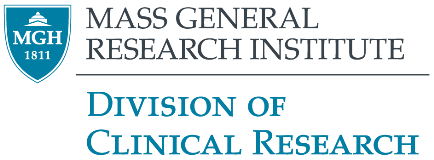Tesamorelin as an Adjunct to Exercise for Improving Physical Function in HIV
Purpose
People with HIV experience earlier impairments in physical function compared to people in the general population. They also exhibit an earlier presentation and more rapid development of frailty, a multisystemic syndrome of aging characterized by reduced activity, fatigue, slowness, weakness, and weight loss. While exercise can improve physical function in people with HIV, it is less effective in doing so than in the general population and is difficult to sustain in the long-term. The goal of this clinical trial is to learn whether the medication tesamorelin will improve physical function and muscle health in adults with HIV when combined with exercise. Tesamorelin is a growth hormone-releasing hormone analogue that is FDA-approved to treat abdominal fat accumulation in people with HIV. While tesamorelin has also been shown to increase muscle mass and improve measures of muscle health, its effects on physical performance and muscle strength have not yet been evaluated. During a 24-week intervention phase, half of participants will be randomly assigned to receive tesamorelin and half of participants will be randomly assigned to receive placebo (a look-alike substance that contains no drug). All participants also will engage in a home-based exercise intervention supervised by an exercise coach. During a subsequent 24-week extension phase, individuals will be monitored off study drug and supervised exercise, and be encouraged to continue to exercise independently. The investigators will investigate effects of tesamorelin on physical function, muscle mass and quality, quality of life, and exercise adherence and self-efficacy. They also will evaluate whether effects of tesamorelin are maintained following treatment cessation. This study may identify an important strategy to improve how individuals aging with HIV function and feel with potential applications to other patient populations.
Conditions
- HIV-1-infection
- Frailty
- Impaired Physical Function
- Abdominal Obesity
- Aging
Eligibility
- Eligible Ages
- Between 50 Years and 80 Years
- Eligible Sex
- All
- Accepts Healthy Volunteers
- No
Inclusion Criteria
- Men and women, 50-80 years old 2. Documented HIV infection on suppressive antiretroviral therapy for at least 1 year with HIV-1 RNA <200 copies/mL and CD4+ T cell count >200/µL 3 3. Sedentary lifestyle, defined as self-reported physical activity that breaks a sweat <3 days/week with no regular resistance exercise in the past 3 months 4. ≥1 Fried frailty criterion (weakness, slow gait speed, exhaustion, decreased physical activity, or unintentional weight loss as defined by specific thresholds) 5. Waist circumference ≥102 cm in men and ≥88 cm in women 6. Normal mammogram within 2 years (females ≤74 years old) or prostate specific antigen <4 ng/mL (males ≤70 years old) per U.S. Preventive Services Task Force (USPSTF) age-appropriate cancer screening guidelines 7. For females, postmenopausal defined as no menses for ≥12 months and anti-müllerian hormone (AMH) <20 pg/mL or history of bilateral oophorectomy at least 3 months ago 8. Provider approval to participate
Exclusion Criteria
- Use of tesamorelin or other growth hormone (GH)-based therapy within 6 months 2. Insulin-like growth factor 1 (IGF-1) z-score >2.0 3. HbA1c >8% 4. Active or suspected malignancy (with the exception of non-melanoma skin cancer) within 24 months 5. Supraphysiologic testosterone or corticosteroid exposure, or change in exogenous testosterone or corticosteroid dose within 3 months 6. Change in glucose-lowering medication (e.g., glucagon-like peptide-1 receptor agonists) within 3 months 7. Active or unstable coronary artery disease, chest pain suspicious for angina, or serious arrythmia 8. History of hypopituitarism, head irradiation, or other conditions known to affect the GH/IGF-1 axis 9. Known hypersensitivity to tesamorelin or mannitol 10. Acute or chronic illness judged by the investigator to represent a contraindication to study participation
Study Design
- Phase
- Phase 2
- Study Type
- Interventional
- Allocation
- Randomized
- Intervention Model
- Parallel Assignment
- Primary Purpose
- Treatment
- Masking
- Quadruple (Participant, Care Provider, Investigator, Outcomes Assessor)
Arm Groups
| Arm | Description | Assigned Intervention |
|---|---|---|
|
Active Comparator Tesamorelin Plus Exercise |
Tesamorelin WR 1.28 mg given subcutaneously daily plus home-based semi-supervised exercise intervention |
|
|
Placebo Comparator Placebo Plus Exercise |
Identical placebo given subcutaneously daily plus home-based semi-supervised exercise intervention |
|
Recruiting Locations
Boston 4930956, Massachusetts 6254926 02114
More Details
- Status
- Recruiting
- Sponsor
- Massachusetts General Hospital
